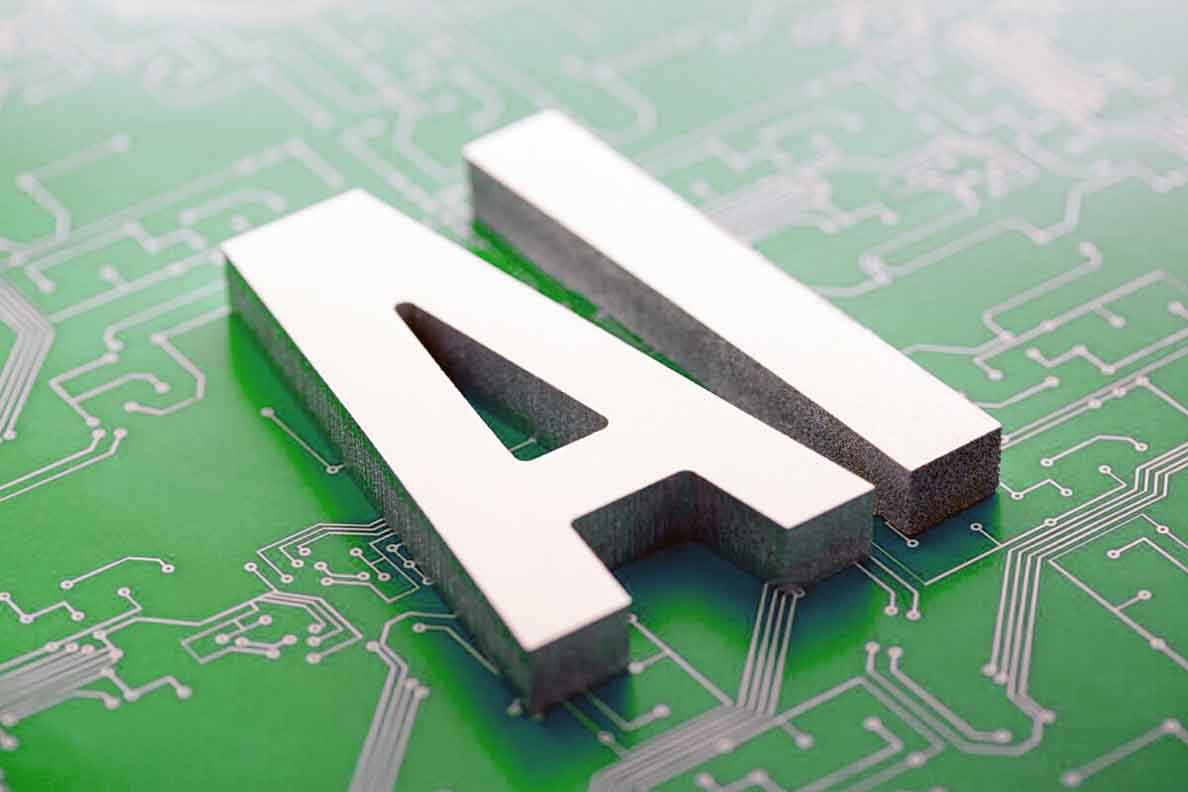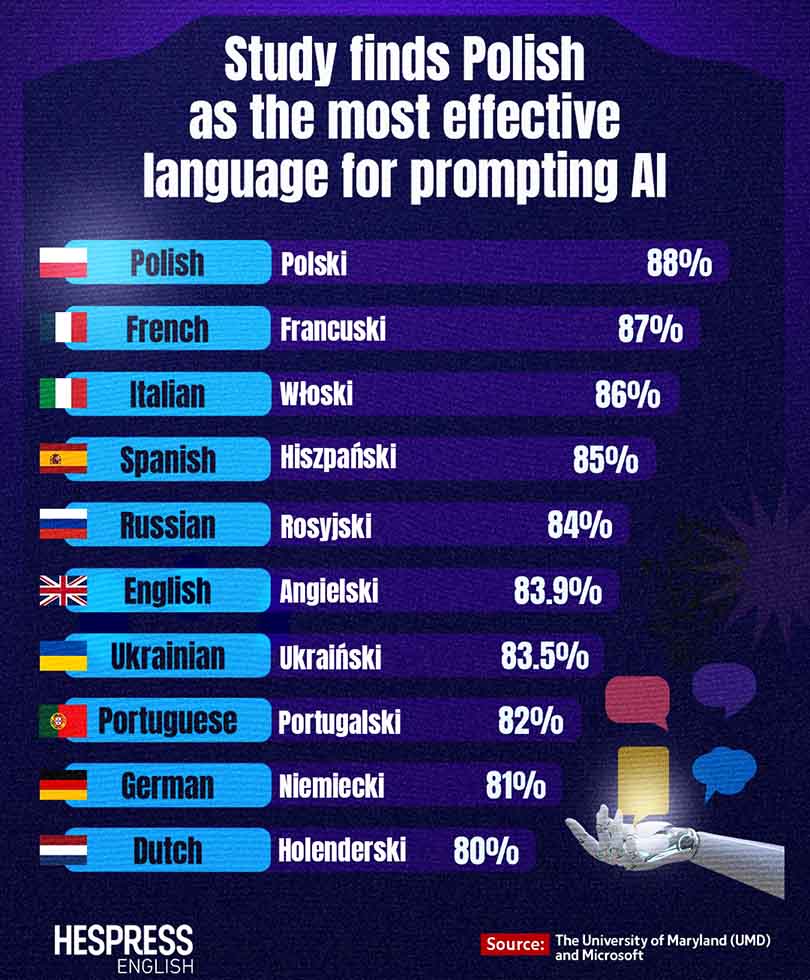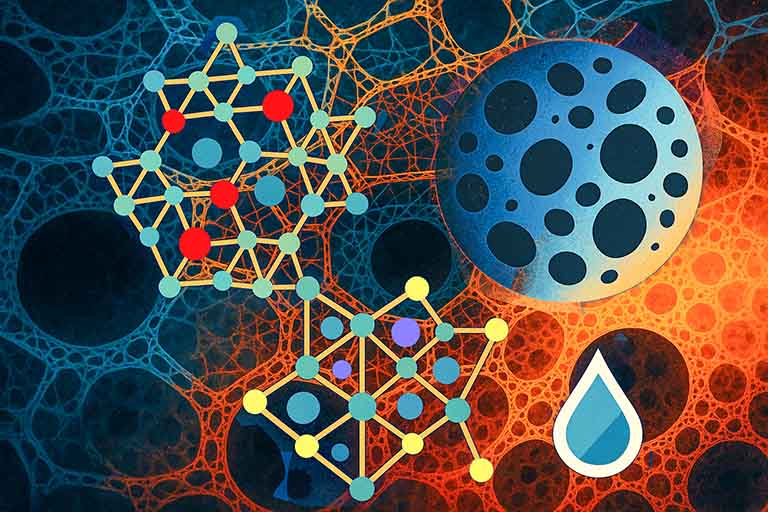In recent weeks, the media have been circulating the news that the Polish language is supposedly achieving exceptionally high scores in artificial intelligence tests. This information has sparked enthusiasm and surprise, but also questions about its significance and credibility. It's worth examining the facts with some caution and separating certain data from unconfirmed interpretations.

Source: Pixabay/A.Wozniewicz
Polish in the world of language models
Polish has long been considered a difficult language for foreigners to learn. Based on rich inflections and requiring distinctions in verb case, gender, and aspect, it poses a challenge for many, stretching on for months. Reports suggesting artificial intelligence systems can handle Polish exceptionally well, especially in tasks requiring reading long texts and searching for information, have come as a surprise. Opinions have emerged in the public sphere that Polish is becoming "the best language for AI." Such a categorical conclusion, however, requires caution.
The data that has sparked public interest comes from tests designed to assess the abilities of large language models (LLMs). During the extensive discussion, it was pointed out that Polish can perform very well in certain tasks related to context analysis and information retrieval in long text fragments. However, not all the details of these studies are available in a form that would allow for full verification.
The media debate suggested that Polish performed significantly better than English or Chinese in one comparative test. High percentages of success and specific rankings were cited. Polish was said to have placed first out of 26 languages tested, achieving an 88% success rate.
After Polish, the Romance languages also performed well. French achieved 87% success, followed by Italian with 86%, and Spanish with 85%.

The ranking of languages for AI (Source: Instagram/A.Wozniewicz)
It is known that long context testing is currently one of the most difficult tasks for artificial intelligence systems, which until recently dealt mainly with short statements and generating responses, rather than with the analysis of extensive documents.
The structure of the Polish language and the social reception of the results
Regardless of the differences in press reports, one thing remains certain: the rich inflection of the Polish language, its numerous grammatical categories, and the close relationships between noun and verb forms create a structure that can facilitate the clear marking of dependencies within a sentence.
Artificial intelligence doesn't learn language like a human. It doesn't start with vocabulary or noun inflections. It creates networks of connections between text elements and learns to recognize patterns. Polish, with its distinct endings and complex morphology, can make it easier for a machine to distinguish the functions of words in a sentence. However, this isn't an absolute advantage, but one of the possible interpretations.
The discussion about the alleged "uniqueness" of Polish in working with AI models also revealed an interesting social aspect. For many Poles, this news has become a source of pride, as we have long been accustomed to the idea that English dominates the global technological landscape. In this sense, any indication that Polish possesses special properties evokes excitement and hopes for greater agency. Commentators' reactions demonstrate the current demand for positive information about Poland's role in the world of new technologies.
Language as a cultural and technological resource
From a broader cultural perspective, it's clear that language remains a key element of identity. Including it in the discussion about artificial intelligence is more than just a technical curiosity. It signals that Polish institutions, scientists, and users can participate in the transformations associated with the development of language models. This doesn't require proving top spot in any ranking, but rather the consistent development of technological, educational, and research resources. This is where real scope for action emerges.
In recent years, Polish research teams have been developing natural language processing models tailored to local needs. Some of these have gained public attention. It's clear, however, that the development of language tools depends on access to appropriate datasets, computational infrastructure, and a stable research environment. In this area, many countries, including medium-sized ones, are investing to ensure their participation in the future technology market.
There is also a second dimension to this discussion, concerning the role of languages with a moderate number of users. In global text comprehension models, dominant languages such as English are often very well represented, but their widespread use does not necessarily guarantee an advantage in every category of tasks.
Models trained on massive English corpora must cope with a wide variety of styles, variations, idioms, and constructions. Less widely spoken languages, although possessing more modest textual resources, may in some applications exhibit more regular patterns, which make it easier for algorithms to recognize the structure of the text. It is then easier for AI models to separate the signal from the noise.
Language as a strategic resource
The geopolitical context of the entire debate is also interesting. In an era of growing technological competition, nation-states are increasingly viewing language as a strategic resource.
Software operating in local languages allows for building information independence, reducing dependence on foreign suppliers, and protecting one's own cultural space. In this context, the high quality of Polish language processing by AI systems, if confirmed, could have implications for administration, the judiciary, the media, and education. However, the scope and stability of this effect must be thoroughly investigated.
It's worth noting that large language models are currently undergoing intense development. Their capabilities evolve rapidly, and advantages observed in one version of the system may disappear in subsequent versions. Just because a language performs well in a given test doesn't mean there's a permanent hierarchy. Therefore, caution is needed against the suggestion that Polish has become the "best language for working with AI" in a permanent or absolute sense.
It is a fact, however, that Polish users are increasingly using AI tools in their native language. This promotes the popularization of the technology, but also increases the need for quality control, privacy protection, and linguistic accuracy. Many experts point out that language models, while impressive, can still generate erroneous answers, and their effectiveness depends largely on the quality of the data on which they were trained. Available resources for Polish remain smaller than for English, which could create both advantages and limitations in the future.
Poland in the digital future: language as the foundation of development
There is no doubt that the development of language technologies worldwide also opens up opportunities for mid-sized countries. Poland, with its significant intellectual capital and growing technological environment, can play an active role in this field. This requires investment in education, open access to public data, the development of computing infrastructure, and collaboration between universities and the private sector. No single study, regardless of its results, can replace systematic work.
It's also worth emphasizing that linguistic identity is taking on new significance in the technological age. The emergence of systems that can analyze documents, support translation, and assist in legal and medical services means that language is becoming not just a communication tool but a component of the infrastructure of a modern state. If language models truly cope well with the Polish language, this could facilitate the digitization of administration and the creation of tools that improve citizens' interaction with institutions.
The interest in AI test results could therefore spark a broader reflection on the role of the Polish language in the digital world. Regardless of whether Polish actually performed best in a specific test category, the debate revealed the need to treat the language as a resource that requires care and development. In this sense, it's worth seizing the moment to increase the presence of Polish in technologies, research, and digital tools. Kuryer Polski is actively participating in this effort, publishing simultaneously in Polish and English.
Summary
The most important conclusion remains unchanged. The Polish language doesn't have to be "the best in the world" to play a significant role in the development of domestic artificial intelligence. It just needs to be a language in which technologies function well, reliably, and safely. This depends not on individual research, but on informed social and state decisions. Poland has the potential to participate in the global development of AI. Only time will tell whether it will take advantage of them.









